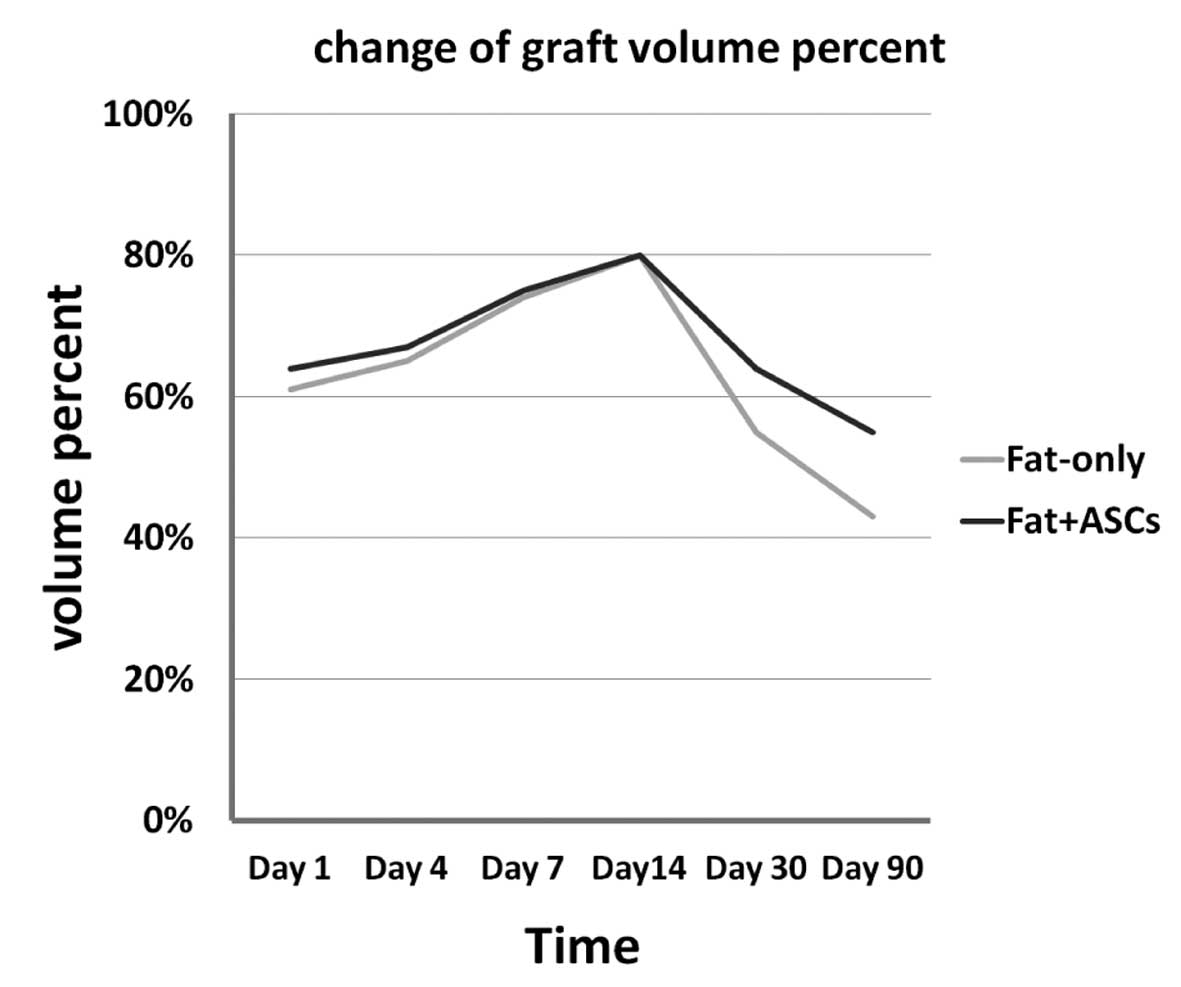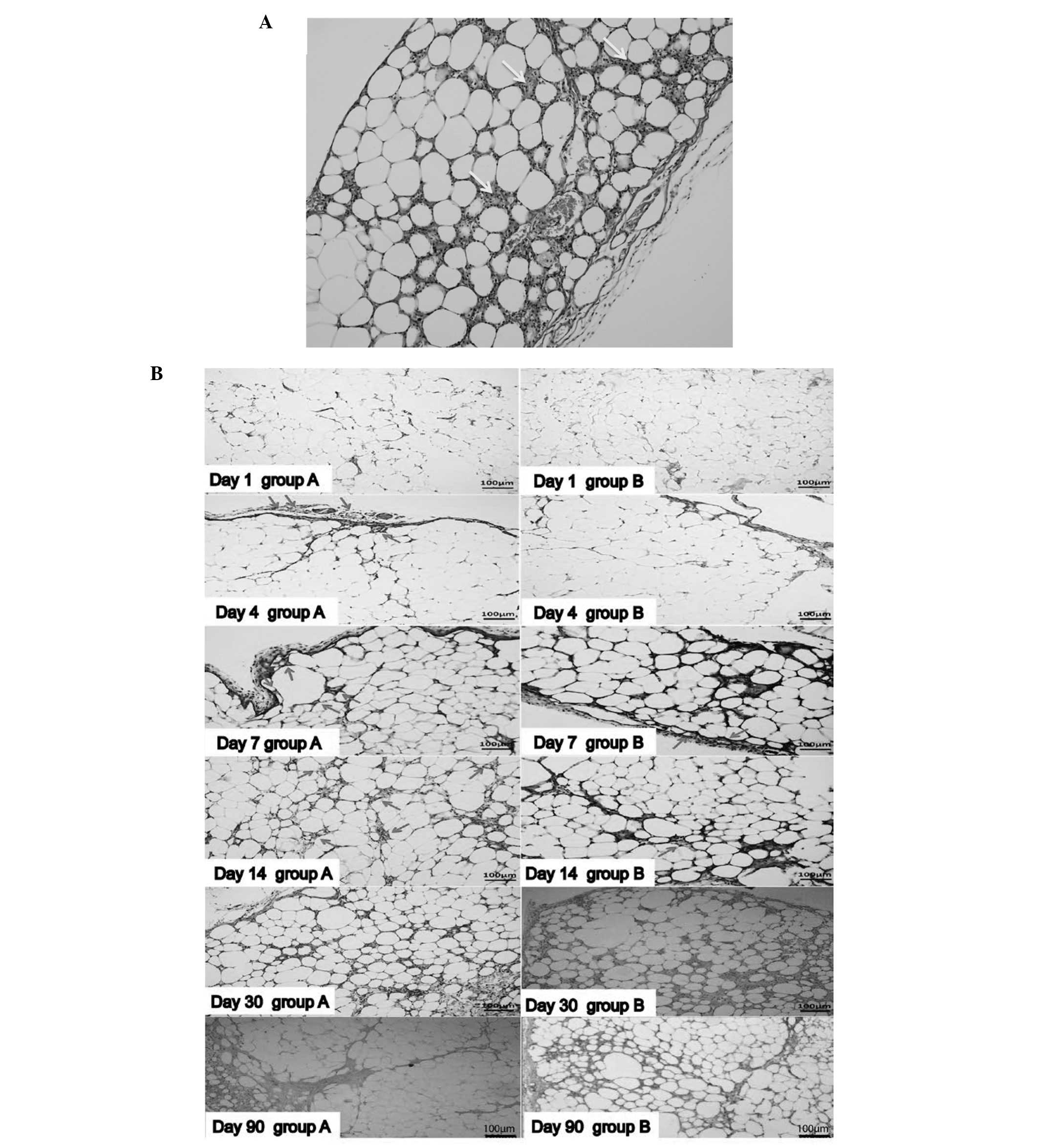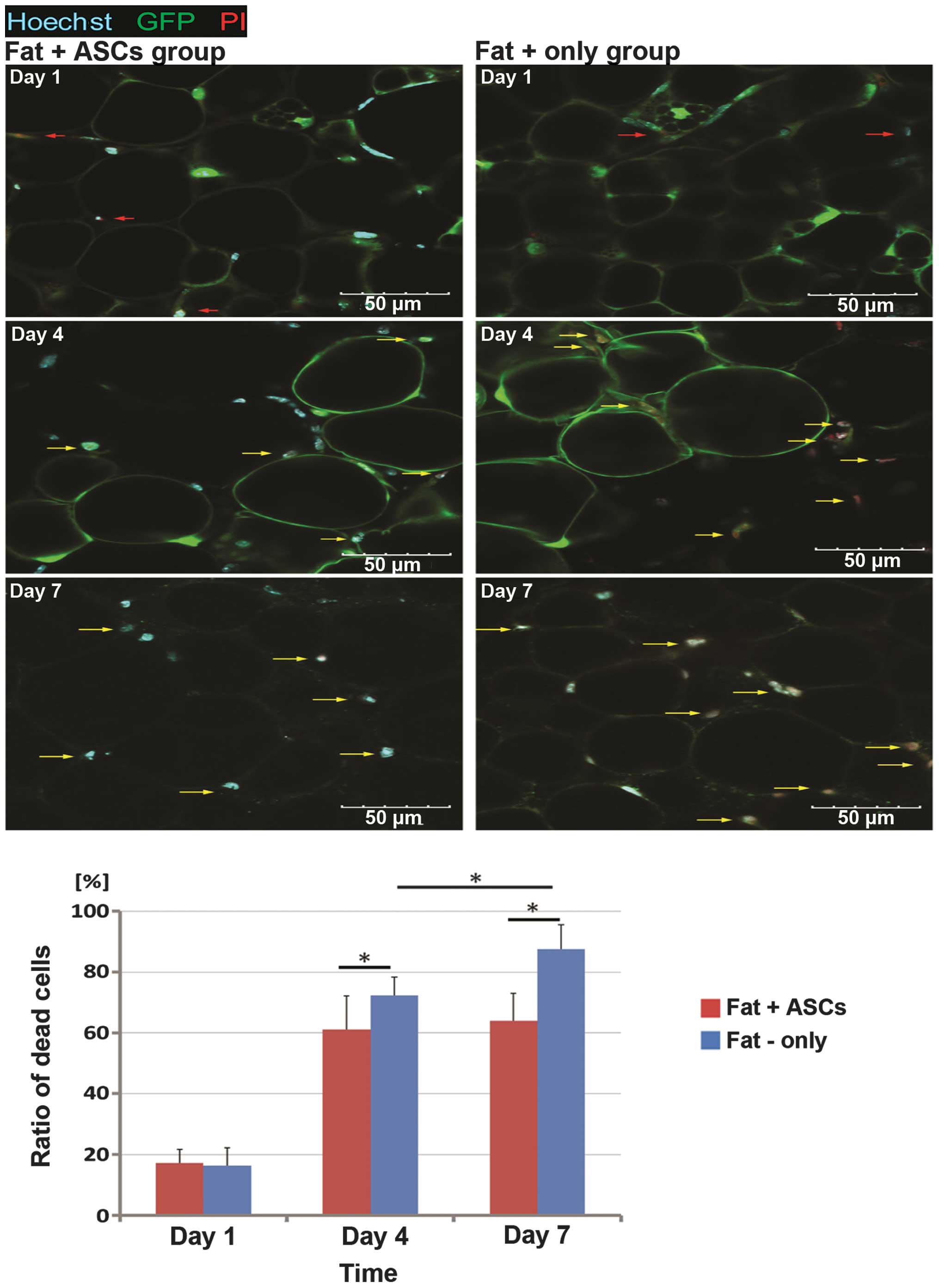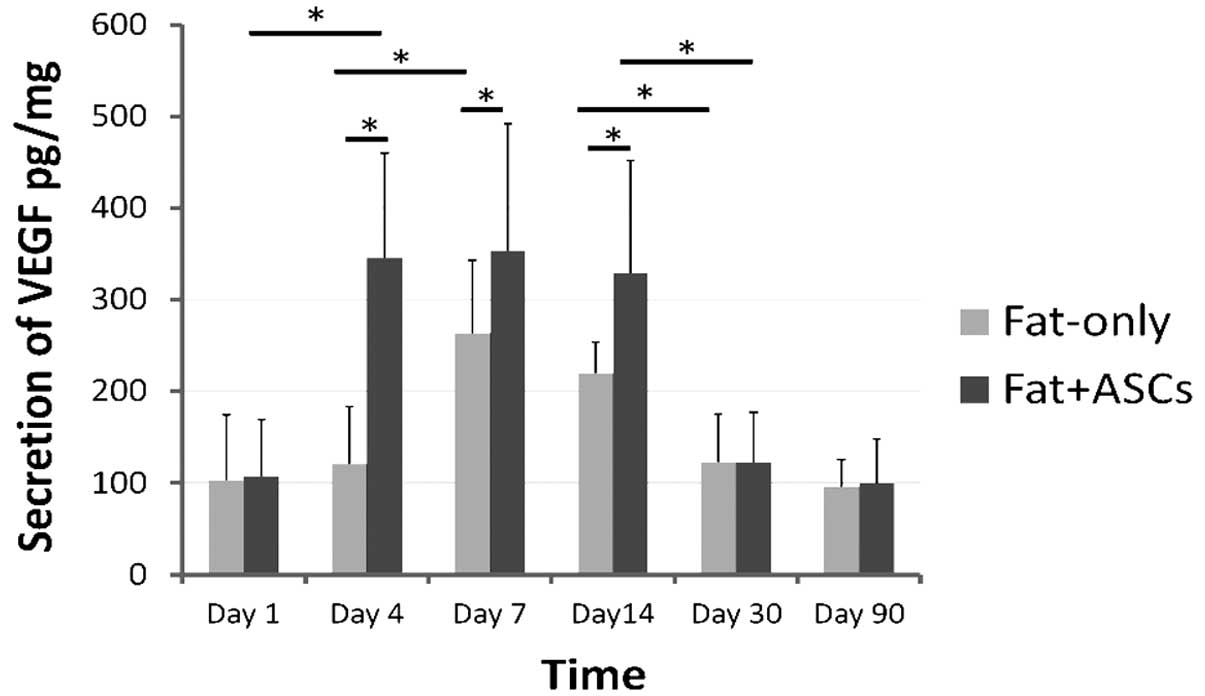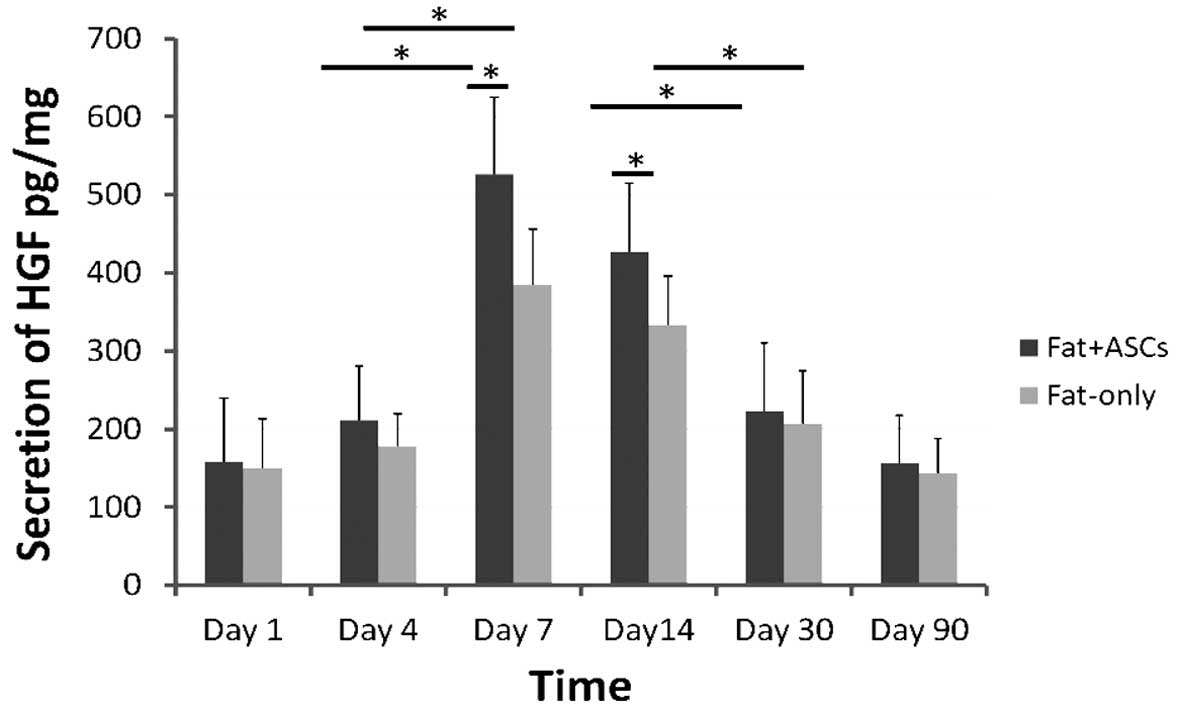|
1
|
Yoshimura K, Sato K, Aoi N, et al:
Cell-assisted lipotransfer for facial lipoatrophy: Efficacy of
clinical use of adipose-derived stem cells. Dermatol Surg.
34:1178–1185. 2008. View Article : Google Scholar : PubMed/NCBI
|
|
2
|
Yoshimura K, Asano Y, Aoi N, et al:
Progenitor-enriched adipose tissue transplantation as rescue for
breast implant complications. Breast J. 16:169–175. 2010.
View Article : Google Scholar : PubMed/NCBI
|
|
3
|
Longobardi G, Pellini E, Diana G and
Finocchi V: Rhytidectomy associated with autologous fat
transplantation in Parry-Romberg syndrome. J Craniofac Surg.
22:1031–1034. 2011. View Article : Google Scholar : PubMed/NCBI
|
|
4
|
Sykes JM, Tapias V and Pu LL: Autologous
fat grafting viability: Lower third of the face. Facial Plast Surg.
26:376–384. 2010. View Article : Google Scholar : PubMed/NCBI
|
|
5
|
Lu F, Li J, Gao J, et al: Improvement of
the survival of human autologous fat transplantation by using
VEGF-transfected adipose-derived stem cells. Plast Reconstr Surg.
124:14372009. View Article : Google Scholar : PubMed/NCBI
|
|
6
|
Yoshimura K, Suga H and Eto H:
Adipose-derived stem/progenitor cells: Roles in adipose tissue
remodeling and potential use for soft tissue augmentation. Regen
Med. 4:265–273. 2009. View Article : Google Scholar : PubMed/NCBI
|
|
7
|
Hirschi KK, Skalak TC, Peirce SM and
Little CD: Vascular assembly in natural and engineered tissues. Ann
N Y Acad Sci. 961:223–242. 2002. View Article : Google Scholar : PubMed/NCBI
|
|
8
|
Morishita R, Sakaki M, Yamamoto K, et al:
Impairment of collateral formation in lipoprotein(a) transgenic
mice: Therapeutic angiogenesis induced by human hepatocyte growth
factor gene. Circulation. 105:1491–1496. 2002. View Article : Google Scholar : PubMed/NCBI
|
|
9
|
Eto H, Kato H, Suga H, et al: The fate of
adipocytes after non-vascularized fat grafting: Evidence of early
death and replacement of adipocytes. Plast Reconstr Surg.
129:1093–1095. 2012. View Article : Google Scholar : PubMed/NCBI
|
|
10
|
Coleman SR: Facial recontouring with
lipostructure. Clin Plast Surg. 24:347–367. 1997.PubMed/NCBI
|
|
11
|
Eto H, Suga H, Matsumoto D, et al:
Characterization of structure and cellular components of aspirated
and excised adipose tissue. Plast Reconstr Surg. 124:1087–1097.
2009. View Article : Google Scholar : PubMed/NCBI
|
|
12
|
Suga H, Eto H, Aoi N, et al: Adipose
tissue remodeling under ischemia: Death of adipocytes and
activation of stem/progenitor cells. Plast Reconstr Surg.
126:1911–1923. 2010. View Article : Google Scholar : PubMed/NCBI
|
|
13
|
Yoshimura K, Eto H, Kato H, et al: In
vivo manipulation of stem cells for adipose tissue
repair/reconstruction. Regen Med. 6:33–41. 2011. View Article : Google Scholar : PubMed/NCBI
|
|
14
|
Rieck B and Schlaak S: Measurement in
vivo of the survival rate in autologous adipocyte
transplantation. Plast Reconstr Surg. 111:2315–2323. 2003.
View Article : Google Scholar : PubMed/NCBI
|
|
15
|
Billings E Jr and May JW Jr: Historical
review and present status fo free fat graft autotransplantation in
plastic and reconstructive surgery. Plast Reconstr Surg.
83:368–381. 1989. View Article : Google Scholar : PubMed/NCBI
|
|
16
|
Murdoch C, Giannoudis A and Lewis CE:
Mechanisms regulating the recruitment of macrophages into hypoxic
areas of tumors and other ischemic tissues. Blood. 104:2224–2234.
2004. View Article : Google Scholar : PubMed/NCBI
|
|
17
|
Lee EY, Xia Y, Kim WS, et al:
Hypoxia-enhanced wound-healing function of adipose-derived stem
cells: Increase in stem cell proliferation and up-regulation of
VEGF and bFGF. Wound Repair Regen. 17:540–547. 2009. View Article : Google Scholar : PubMed/NCBI
|
|
18
|
Rubina K, Kalinina N, Efimenko A, et al:
Adipose stromal cells stimulate angiogenesis via promoting
progenitor cell differentiation, secretion of angiogenic factors,
and enhancing vessel maturation. Tissue Eng Part A. 15:2039–2050.
2009. View Article : Google Scholar : PubMed/NCBI
|
|
19
|
Nishimura T, Hashimoto H, Nakanishi I and
Furukawa M: Microvascular angiogenesis and apoptosis in the
survival of free fat grafts. Laryngoscope. 110:1333–1338. 2000.
View Article : Google Scholar : PubMed/NCBI
|















